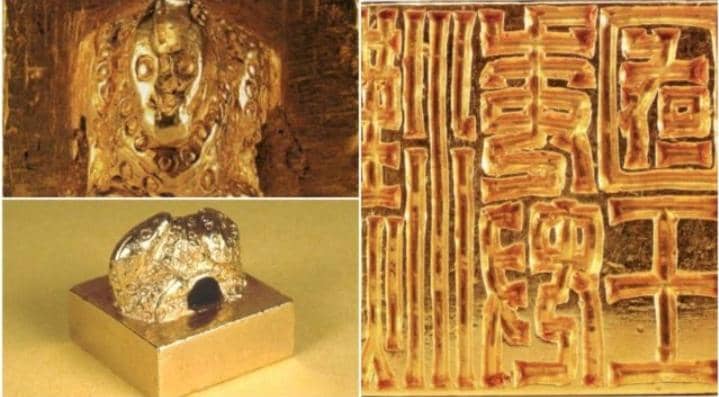The King of Na gold seal is a significant artifact discovered in 1784 on Shikanoshima Island, Japan. Made of 95% pure gold, it was bestowed by Emperor Guangwu of Han to a Japanese envoy in 57 AD, marking Japan’s first historical record as a political entity.
The seal features five Chinese characters that identify it as belonging to the King of Na, a vassal state of the Han dynasty. Today, it is housed at the Fukuoka City Museum and recognized as a National Treasure of Japan.
The seal was unearthed by Jinbei, a farmer who stumbled upon it while repairing an irrigation ditch. He found the seal encased in stones arranged like a box, with one heavy stone requiring two adults to lift.
This fortuitous discovery led to the documentation and reporting of the find to local authorities, sparking interest in its historical significance. Jinbei’s discovery not only changed his life but also opened a window into Japan’s ancient diplomatic relations.
The design of the seal is intricate, featuring a coiled serpent handle and inscriptions in Tensho style. The five characters read as “Han” (referring to the Han dynasty), “Wa” (an ancient name for Japan), “Na” (the kingdom), “state,” and “ruler.” Collectively, they signify the King of Na as a tributary to the Han dynasty, providing crucial evidence of Japan’s early political structure and its relationship with China.
Historically, the King of Na seal represents Japan’s entry into East Asian diplomacy, reflecting the hierarchical nature of ancient Chinese governance. Seals were significant symbols of authority; gold seals indicated high status, while other materials were used for lesser ranks. The King of Na seal was part of a broader diplomatic framework that integrated various ethnic groups under Chinese influence.
Despite its importance, the circumstances surrounding the seal’s rediscovery remain mysterious. Subsequent excavations on Shikanoshima Island have yielded no further artifacts related to it, leading to speculation about its origins.
The King of Na gold seal continues to intrigue historians and archaeologists, symbolizing a pivotal moment in Japanese history and cultural heritage.

